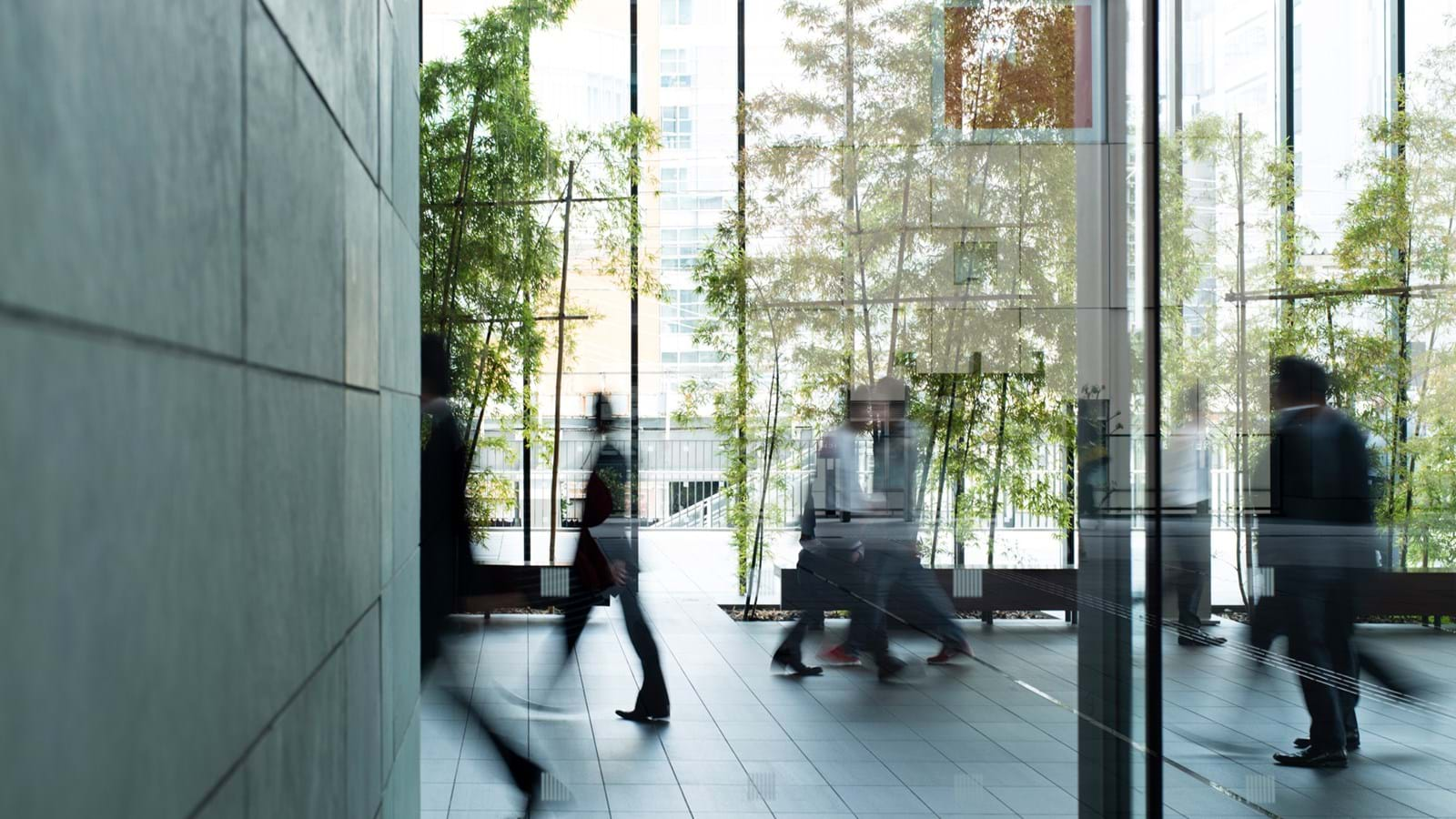May 27, 2021
— Kira Skovbo Moser
Make complexity your strength
The challenges of making the hybrid workplace work? Same as the solutions: collaboration, communication, culture – and the right technology.

Offices all around the world are promising a wide range of back-to-better, back-to-the-future or even not-going-back-at-all strategies for how we will be working post-Covid. As various strategies are hinting, ‘back to normal as we know it’, is out of the question. So what will our new way of working look like? Hybrid seems to be part of the answer.
The approach of going hybrid is a popular solution – but also a complex one. Working from home, working from anywhere and working from the office will have to be combined and balanced in new, creative ways. We are listing some of the main challenges to help you future-proof your workplace and embrace the complexity.

Collaboration and communication is key
Working from home made us productive. It also made us socialise less. Sounds like a good way to gain revenue, right? The problem is that for creative innovation and problem solving to happen people need to get together face-to-face. A lot of creative problem solving relies on the little encounters – formal as well as informal – that take place across departments and projects in the physical workspace.
This invisible value creation happens in what is called a human moment: The face-to-face interactions that make us connect with each other, create trust and build commitment. All of which you will miss out on if you are sitting alone at home in front of your screen, busy being productive.
But some of us might actually enjoy being productive at home without all the fuss of going to a buzzing office, you might think. Why not let the ones who have the need to socialise go back to the office, and leave the rest of us to our peace and quiet in the workplace at home? This might sound like a perfect put-the-employee-first strategy.
However, there is a danger that missing out on the human moments at the office will create an A-team and a B-team in your workplace. All the informal information sharing that goes on in the workplace will be lost for those who never clock in at the physical office. Of course, this can somewhat be avoided if you are aware of practising transparent, thorough and regular communication across online and offline channels. But making sure everyone gets together or has the opportunity to check-in at a physical office at least some of the time will ensure a more balanced workplace and workforce.
Keeping the culture alive
That being said, the role of the physical office will also change. When lots of work tasks can be carried out from pretty much anywhere, the one thing that can’t will be of even greater importance. Going from a place mainly focused around productivity, the physical office will become the social anchor of your hybrid workplace. Because, for most people, going to work is not just about getting the work done. If you like your workplace, it is probably also because of your colleagues, the culture and your sense of belonging.
The physical workplace will be the place where new employees can get a sense of how things are done ‘around here’. It will be the place for colleagues to reconnect and for departments to come together – once we are allowed to again.
A framework that works
So, focusing on the human part of the workplace is important. But being able to do so calls for the right facilities and the right technology. Overall, this means we need a framework that lets people come together both online and in real life with as little friction as possible. Think of it as two overall areas: We need the right tech to create an interconnected hybrid office. And we need the tech that can help us monitor our physical spaces, keeping people safe and flexible at the same time.
First, there are technologies that help us communicate digitally, both synchronously and asynchronously, so that even though we work in different places and, maybe even at different times, the workflow will be as smooth as possible.
Secondly, there is technology concerning property management, proptech, and facility management. These technologies help us optimise the physical facilities: office buildings, space and desk management, cross-company collabs and even the sub-leasing of unused square meters or coordination and management of satellite offices. By using and improving these facilities for collaboration you can minimise the complexity – and at the same time increase the efficiency among your workforce.
Experts already see, and predict, an even bigger shift in company budgets favouring better digital experiences for employees, technologies that support office space optimisation and investments in AI technologies to support both.
What will work for your workplace?
There will be no one-size-fits-all solution for getting back to the office. Every workplace will have to examine what their employees need and how that fits with the company setup and strategy. Simply put, we need to ask ourselves how we want to create our new normal. By being aware of the main challenges and how your company best approaches them, you already have a head start at turning complexity into your advantage.